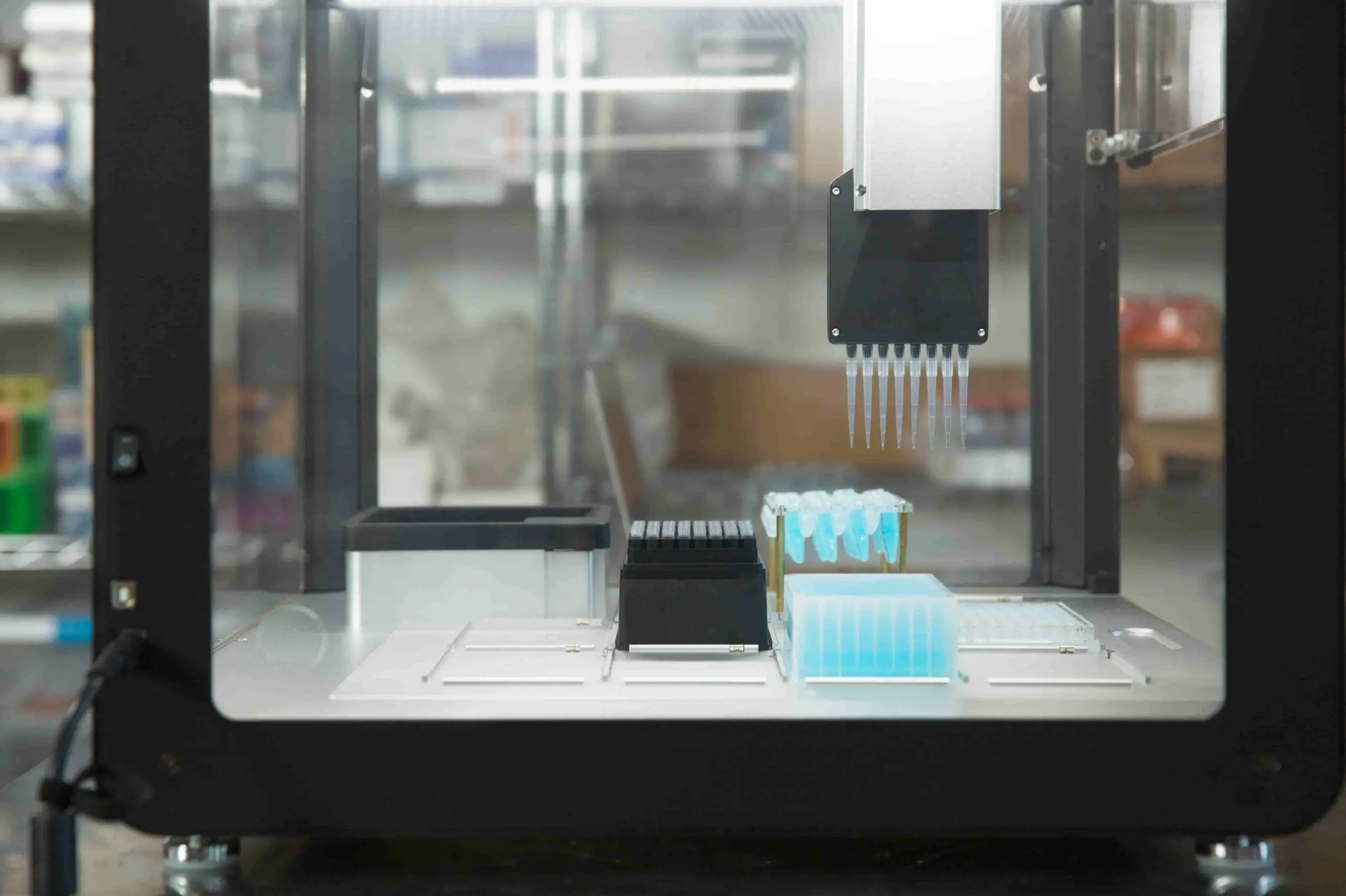Nucleic acid isolation is a cornerstone technique in molecular biology. Many labs use manual purification protocols for this, but they have four downsides.
Nucleic acid isolation is a cornerstone technique in molecular biology, providing the starting material for most wet lab applications. However, isolating the material is only half the battle. Purification of the isolated nucleic acids is just as critical for reliable and consistent data and overall experimental success. For example:
- Removal of inhibitors and impurities that may interfere with downstream reactions, such as PCR and reverse transcriptase inhibitors. Inhibitors and impurities may originate from the sample itself (e.g., in the case of complex environmental samples), chemicals used during the isolation procedure (e.g., detergents, organic solvents), and/or contamination in the work area.
- Pure starting material is critical for NGS sample preparation. Any impurities or undesired material (e.g., primer-dimers) present during target enrichment, library construction and size selection can lead to artifacts that render the sequencing data meaningless, potentially resulting in significant loss of time and money.
- Purification of desired PCR amplicons, plasmids, restriction-digested DNA fragments, and RNA (e.g., small RNA species) from reaction mixtures and agarose gels are prerequisite techniques in diverse applications, including cloning, genetic modification, RNA and DNA characterization, in vitro transcription and translation, and more.
Manual Purification Protocols Have Their Downsides
Molecular biologists are spoiled for choice today with a range of easy-to-use kits that offer seamless nucleic acid isolation and purification from virtually any sample type imaginable. However, while many of these kits are very effective in purifying nucleic acids, they are usually designed for manual operation, and this presents several problems:
- Contamination risk. As with all manual workflows that involve pipetting, manual purification bears the risk of carry over from sample to sample. This risk may be reduced with multichannel pipetting, but this option is only feasible for plate-based protocols. Even with multichannel pipetting, mistakes are unavoidable at times, especially with the fatigue that may arise when processing relatively large sample numbers over multiple rounds.
- Difficult to scale-up. With tube-format protocols, staff are often restricted by the number of tubes they can process in a centrifuge and other necessary equipment in one go. One common workaround is to process large sample numbers in smaller batches, but this is slow and requires a lot of hands-on effort. Thus, manual purification is not a feasible option for large-scale operations.
- Error prone. Besides the risk of sample carryover, manual protocols carry other error risks. Just imagine a scenario where you’ve labeled 24 sample tubes and half way through the protocol the labels wash off when you disinfect your workbench. This is an easy trap to fall into while trying to keep contamination risk low, but it’s a difficult one to recover from. Such a scenario can ruin an entire experiment.
- Time-consuming. Short incubation steps and brief centrifuge spins leave very little walk-away time per run, and the need to process samples in batches will suck up even more of your precious time. If purification is a regular part of your lab’s workflow, it can help your lab members better utilize their time.
Automation Removes Manual Process Errors and Improves Speed and Productivity
The problems described above may impact data quality and experimental output, alone or in combination. If you are working with nucleic acids, you already know the importance of purification. Opting for an automated setup will allow you to address the problems associated with manual protocols, helping you to achieve consistent data, minimize errors, increase speed and throughput, and leaving you with more walk-away time to spend on other more exciting lab tasks! And in the long-term, your lab might even save money by investing in automation.
So what are you waiting for? With a pipetting robot and the right protocol, you can look forward to automating the following procedures:
- PCR product purification
- Plasmid purification
- DNA and RNA cleanup after enzymatic and labeling reactions
- NGS library cleanup
- PCR inhibitor removal
- Many more!
Getting Started
As we alluded to above, the sky is the limit when you have a robot within your reach. Most purification procedures can be adapted for automation. All you need to do is figure out the protocols, but you don’t need to do this alone. If you’re considering automation for your lab, get in touch with us. We’d be delighted to help walk you through it.
